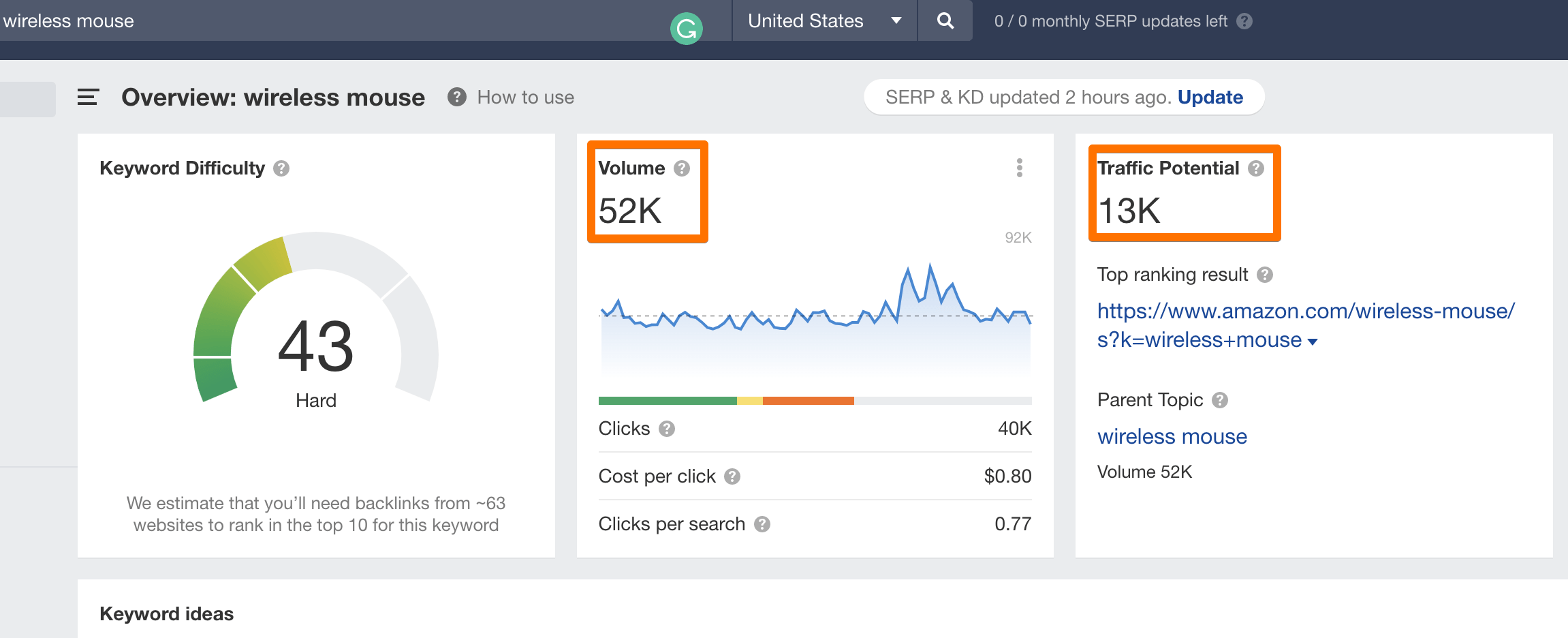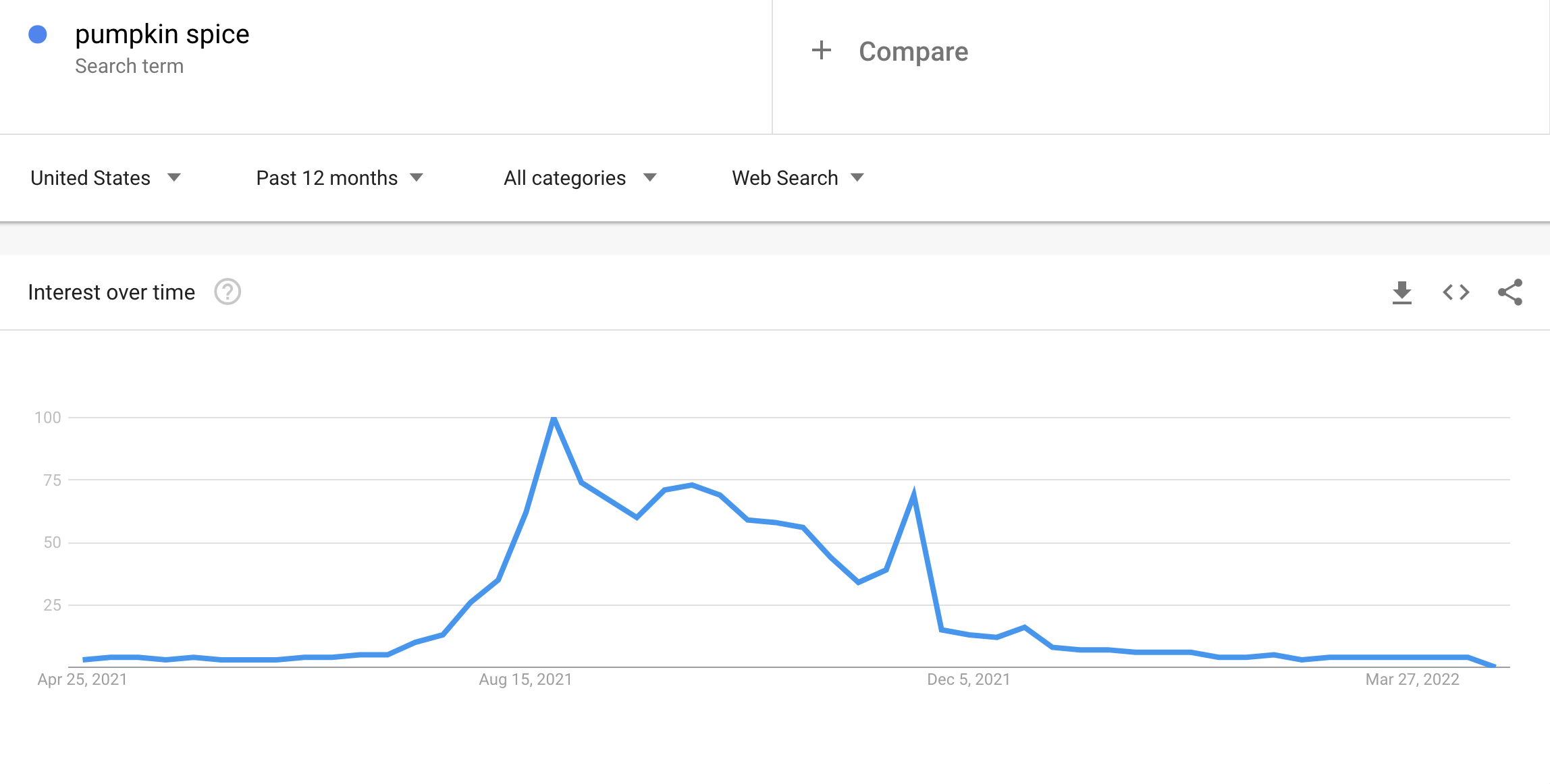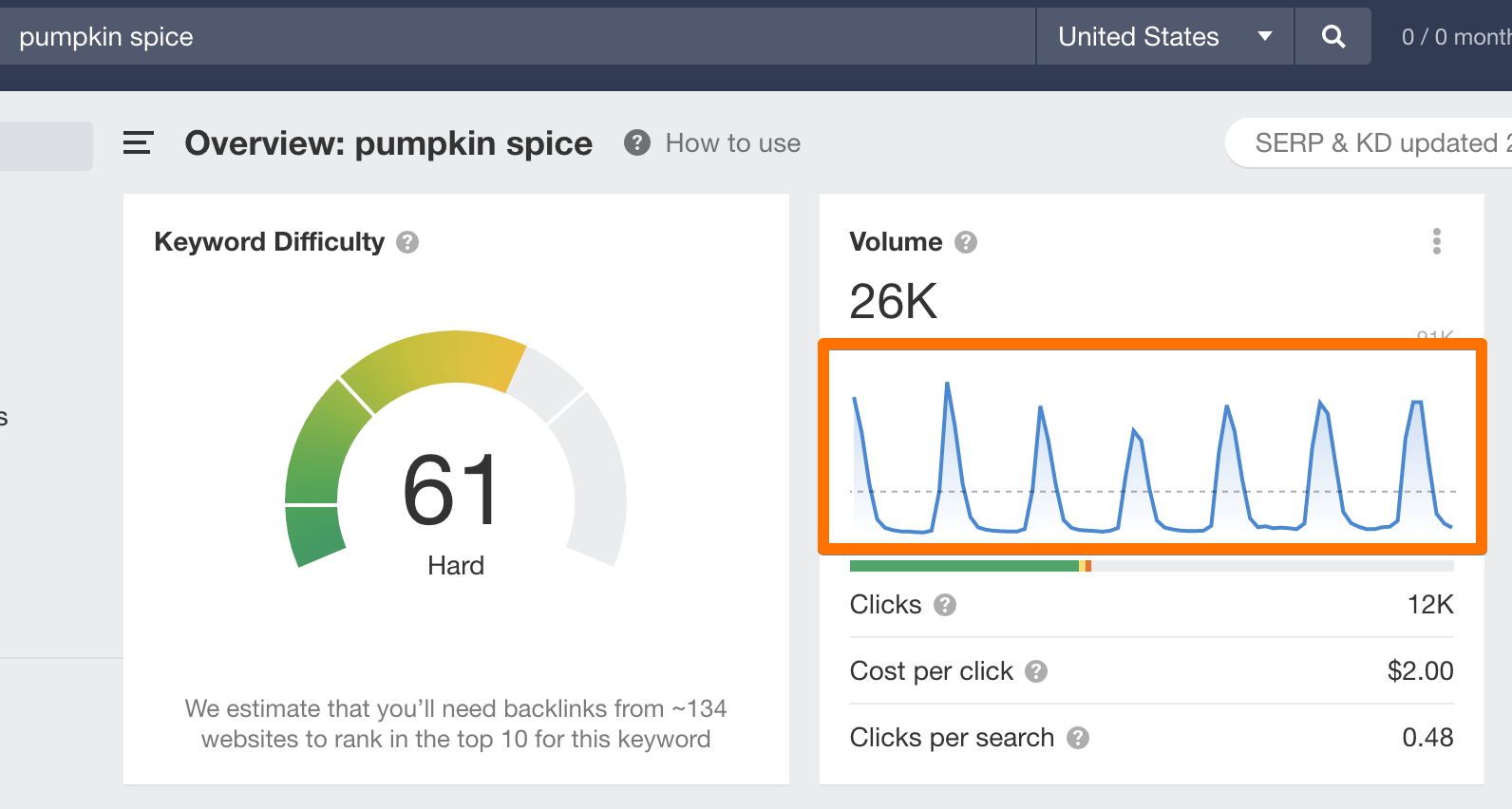Search Volume
What is search volume?
Search volume refers to the number of times, on average, that users enter a particular search query into a search engine each month.
In Google’s Keyword Planner and many SEO tools, Search Volume is the annual average value.
You should note that Google Keyword Planner groups phrases and words with a similar meaning into one “bucket” and shows the search volume for all keywords in a bucket.
From the keyword research perspective, you should understand that search volume for a given keyword does not equate to the potential traffic you can expect, because of three key reasons:
- As an annual average, the search volume might not represent the current demand for the search term.
- Not all searches result in clicks. In fact, out of the 5.1 trillion searches conducted in 2020, only an estimated 33.59% resulted in clicks on organic search results, leaving roughly ⅔ as “zero-click” searches. This is partly because PPC advertisers steal clicks away from the organic results, and partly because searchers don’t always find what they’re looking for.
- Any ranking you achieve will share the total estimated search volume with the rest of the results on the SERP, even if you rank at the first position.
Why is search volume important for SEO?
Search volume is a valuable metric for SEO and PPC strategies because it’s the basic source for keyword research and traffic estimations. However, this is only helpful if you don’t have access to more accurate tools (such as Keywords Explorer).
Keep in mind that relying on search volumes of individual keywords is not a good practice for SEO. Elements like PPC ads and featured snippets will steal clicks away from your page in the SERP, and sometimes the search volume data just isn’t accurate.
Besides, websites and pages don’t rank for just a single keyword. That’s why it’s better to use the Traffic Potential metric from Ahrefs instead.
SEO best practices related to search volumes
1. Don’t rely on the search volume alone
It’s important not to make traffic projections based solely on the search volume for a target keyword. As mentioned earlier, you have to consider the possibility of inaccuracy, stolen clicks, grouping words, and other factors that can skew the actual potential traffic of your chosen keyword.
Instead, we recommend using Ahrefs’ Traffic Potential metric inside of Keywords Explorer.
Traffic Potential shows the sum of organic traffic that the #1 ranking page for your target keyword receives from all the keywords that it ranks for.

This number gives you a much better picture of the actual traffic your page would get when it ranks, as compared to the search volume.
2. Don’t chase high search volume keywords blindly
Search volume is only one factor when picking a target keyword. You also need to consider the difficulty in ranking for that term. In Ahrefs, we have an oversimplified metric called Keyword Difficulty (KD) that can help you see the competitiveness of a keyword at a glance.
Often, especially for new websites, it’s a better idea to target keywords with lower search volumes and a lower KD. Then, as you get more established and build up your domain rating, your site has a better chance of ranking with those more challenging keywords.
3. Don’t forget to check trends
Since search volume is an average annual value, a high search volume number does not mean that the keyword has high search volume right now.
You may be looking at a keyword that was exceedingly popular before (such as fidget spinners), but no longer has the same interest. Similarly, you may find a keyword that is only trending on a seasonal basis – such as the term “pumpkin spice,” which typically spikes in August and declines by January each year.

You can also check the volume trend in Keywords Explorer.

FAQs
How to see keyword search volume
The easiest way to see keyword search volumes is with a special keyword research tool like Keywords Explorer
You can also uncover exact search volumes in Google Keyword Planner, but it’s a bit tricky. You can learn how to do it in our guide to GKP.
Why are search volumes different across SEO Tools?
Most keyword research tools simply pull data from Google Keyword Planner (which is not perfect, as I mentioned before). More advanced tools like Ahrefs use different methods to refine the data, which results in a difference in reported search volume.
What is a good keyword search volume?
Like many other things in SEO, it depends.
Sometimes, it’s worth pursuing keywords with 10-100 search volume if they have extremely high potential value for your business and ignoring 10k+ volume keywords that don’t make sense for your business or are extremely difficult to rank for.
Lastly, keep in mind that there may be a lot of additional keyword variations belonging to your chosen topic, which means higher total traffic potential than what the keyword’s search volume would suggest.